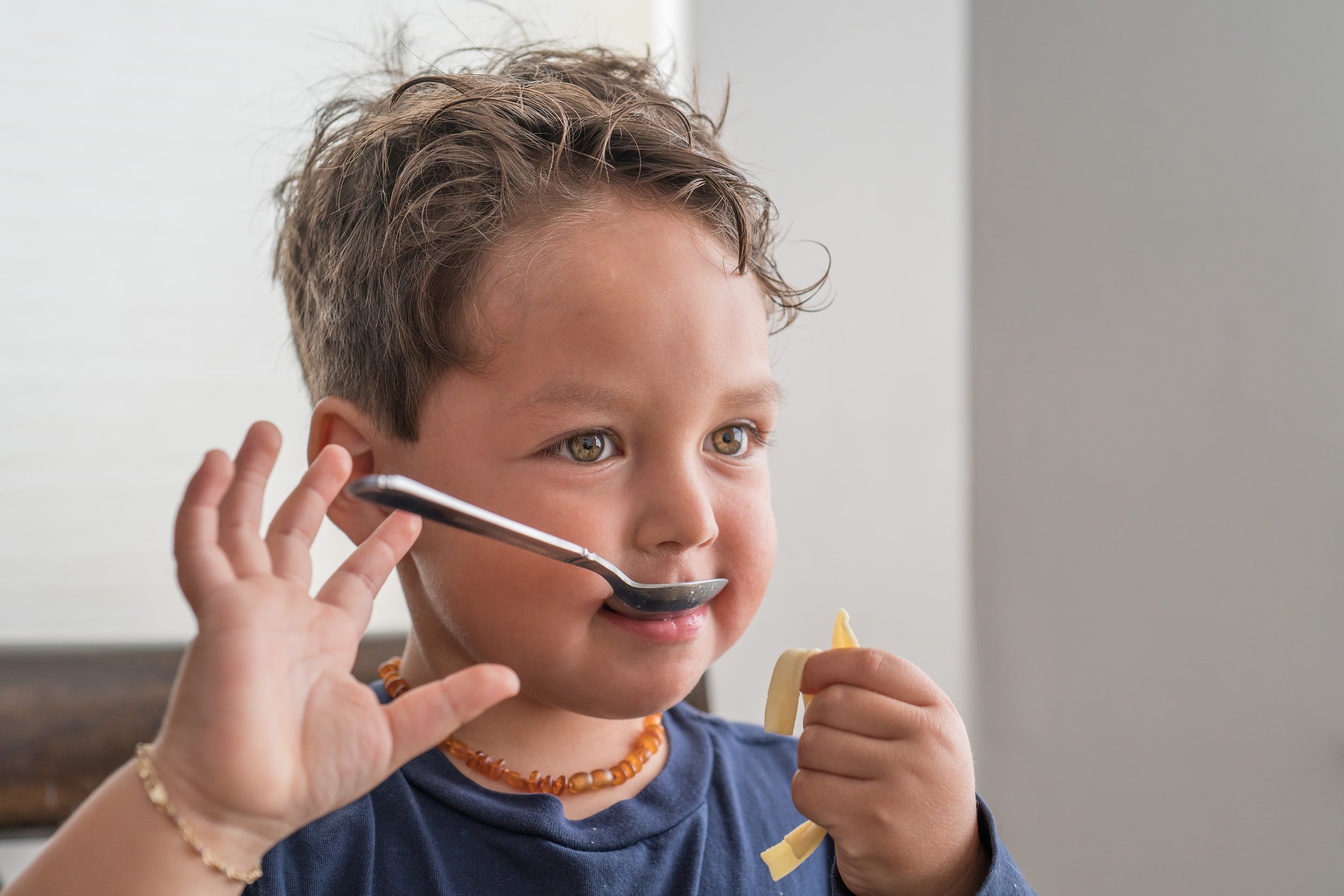Your Trusted Food Therapist on Long Island
Wiki Article
Browsing the Course to Successful Feeding: Cutting-edge Techniques and Treatments for Effective Feeding Treatment
Are you struggling to locate effective methods and interventions for successful feeding treatment? Look no more. This article will guide you via the path to success, supplying innovative methods to assess feeding obstacles and set possible goals. With evidence-based strategies, you'll find out just how to attend to sensory processing issues and utilize assistive modern technology and adaptive equipment. And also, we'll show you the relevance of teaming up with families and caretakers for ideal feeding outcomes. Prepare to browse the course to effective feeding!Assessing Feeding Obstacles and Identifying Goals
You need to begin by evaluating your kid's feeding difficulties and determining certain objectives for their therapy. This step is vital in creating an efficient feeding therapy plan. Begin by observing your child's feeding behaviors and patterns. Seek any kind of aversions or troubles they might have in the direction of specific foods or textures. Remember of any physical or sensory issues that might be affecting their ability to eat. You can then establish certain goals for their therapy when you have actually identified these difficulties. These objectives must be sensible and obtainable, concentrating on enhancing your youngster's feeding abilities and overall nourishment. You may establish an objective for your child to be able to endure a wider variety of textures or to self-feed with tools. It is very important to communicate these objectives with your child's feeding specialist so they can tailor the treatment sessions to address these certain challenges. By analyzing your child's feeding obstacles and setting objectives, you are taking the primary step in the direction of helping them establish successful feeding skills.Carrying Out Evidence-Based Strategies for Feeding Therapy
Implementing evidence-based approaches for feeding treatment can bring about favorable results for kids. You are guaranteeing that the treatments made use of are supported by scientific research and have actually been proven effective when you incorporate these techniques into your child's treatment plan. This approach increases the possibility of success and helps deal with the certain feeding challenges your kid might be experiencing.By following evidence-based techniques, you can give your youngster with the most effective possible treatment and assistance. These strategies might consist of making use of a selection of sensory experiences during mealtimes, such as exploring different textures and flavors, to urge acceptance of brand-new foods. Additionally, applying behavior modification techniques can assist attend to particular consuming habits and promote much healthier consuming patterns.
An additional essential facet of evidence-based feeding therapy is involving the family members in the therapy process. By providing education and assistance to caregivers and moms and dads, they can play an active role in assisting their child get over feeding obstacles. This collaborative strategy improves the performance of therapy and advertises long-term positive changes in your youngster's consuming habits.

Resolving Sensory Processing Issues in Feeding Treatment
Resolving sensory processing issues in feeding treatment can be tough, yet it is essential for promoting a positive eating experience for children. When you experience a kid with sensory handling troubles throughout nourishment, it is necessary to recognize that their reactions to specific appearances, preferences, scents, or also noises are not intentional (feeding therapy long island). By recognizing and dealing with these concerns, you can assist develop a helpful setting that encourages healthy and balanced consuming practices
One reliable strategy is to introduce new foods gradually. Beginning with little, non-threatening sections and progressively boost the amount with time. This technique allows the youngster to end up being familiar with the food and its sensory homes at their own pace. In addition, providing a selection of structures and tastes can assist desensitize their sensory system and expand their food choices.
Involving the youngster in sensory play tasks can additionally be valuable. Encourage them to explore various structures, such as squishing, squeezing, or touching different food items. This can help stabilize sensory input and decrease aversions to particular structures.
One more important aspect is giving a calm and organized eating environment. Decrease interruptions, such as bright lights or loud sounds, which can bewilder their senses and hinder their ability to concentrate on consuming. Creating a predictable routine and using visual timetables can likewise aid the child really feel even more secure and in control during mealtime.

Using Assistive Innovation and Adaptive Equipment
Making use of assistive modern technology and adaptive equipment can greatly enhance the feeding experience for children with sensory handling problems. When you have trouble with sensory processing, mealtime can be overwhelming and challenging. But with the right devices, you can make it a much more satisfying and effective experience.One option is utilizing specialized plates and tools made to suit your requirements. These utensils may have textured handles or a larger hold, making them much easier to adjust and hold. Plates with separated sections can help divide different foods and stop them from touching, which can click reference be a source of discomfort for some youngsters.
Along with specialized utensils and plates, there are additionally assistive tools that can be made use of throughout feeding. A heavy vest or lap pad can provide deep stress input, assisting to relax and manage your sensory system. A vibrating toothbrush or chewable jewelry can give dental sensory excitement, making the act of consuming much more delightful.
Technology can also play a function in boosting the feeding experience. There are applications and tools offered that can supply visual or auditory signs, such as timers or prompts, to assist you stay focused and organized during mealtime.
Working Together With Family Members and Caregivers for Successful Feeding End Results
When working together with family members and caretakers, you can work with each other to create a nurturing and helpful atmosphere for successful feeding results. By including households and caregivers in the feeding therapy process, you can gain valuable insights into the kid's feeding challenges, habits, and choices. food aversion therapy long island. This collaboration permits an all natural technique to feeding therapy, attending to not only the physical aspects but also the emotional and psychological factors that may affect a kid's feeding abilitiesOne key aspect of teaming up with caregivers and households is offering education and learning and training. By furnishing them with knowledge and abilities, they can actively join the feeding therapy process and sustain the child's progress beyond treatment sessions. This can consist of showing them feeding strategies, approaches for taking care of mealtime home actions, and recognizing the value of consistency and routine in developing healthy consuming habits.
In addition, including family members and caregivers in setting goal and treatment preparation guarantees that their viewpoints and goals for the kid are taken right into consideration. By functioning with each other, you can establish realistic and attainable goals that line up with the household's values and top priorities - food therapist farmingdale. This collective method cultivates a feeling of ownership and empowerment, creating a solid foundation for successful feeding outcomes
Additionally, open and normal communication with caregivers and families is necessary for reliable collaboration. By preserving recurring dialogue, you can deal with worries, give support, and make necessary modifications to the feeding treatment strategy as required. This communication also enables sharing progression updates, commemorating achievements, and identifying any difficulties or obstacles that might develop.

Final Thought
You have discovered various strategies and treatments for efficient feeding treatment, such as assessing difficulties, implementing evidence-based methods, dealing with sensory handling issues, and making use of assistive innovation. Remember to always remain positive and innovative in your strategy to feeding therapy.It's important to connect these objectives with your child's feeding specialist so they can customize the therapy sessions to attend check to these specific difficulties.Executing evidence-based techniques for feeding treatment can lead to positive end results for children.Attending to sensory handling issues in feeding treatment can be challenging, yet it is important for advertising a positive eating experience for kids. By including family members and caretakers in the feeding therapy process, you can get valuable insights into the child's feeding routines, choices, and obstacles. By equipping them with knowledge and abilities, they can proactively get involved in the feeding treatment process and support the child's progression outside of treatment sessions.
Report this wiki page